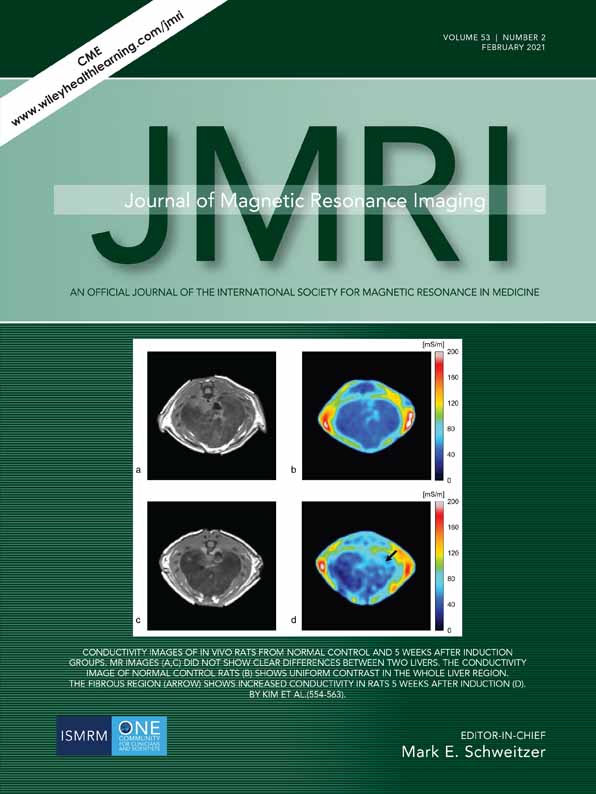Microstructural Integrity of Peripheral Nerves in Charcot–Marie–Tooth Disease: An MRI Evaluation Study
Contract grant sponsor: University of Malaya Research; Contract grant number: BK045-2015.
Abstract
Background
Charcot–Marie–Tooth (CMT) disease is diagnosed through clinical findings and genetic testing. While there are neurophysiological tools and clinical functional scales in CMT, objective disease biomarkers that can facilitate in monitoring disease progression are limited.
Purpose
To investigate the utility of diffusion tensor imaging (DTI) in determining the microstructural integrity of sciatic and peroneal nerves and its correlation with the MRI grading of muscle atrophy severity and clinical function in CMT as determined by the CMT neuropathy score (CMTNS).
Study Type
Prospective case–control.
Subjects
Nine CMT patients and nine age-matched controls.
Field Strength/Sequence
3 T T1-weighted in-/out-of phase spoiled gradient recalled echo (SPGR) and DTI sequences.
Assessment
Fractional anisotropy (FA), axial diffusivity (AD), radial diffusivity (RD), and mean diffusivity (MD) values for sciatic and peroneal nerves were obtained from DTI. Muscle atrophy was graded according to the Goutallier classification using in-/out-of phase SPGRs. DTI parameters and muscle atrophy grades were compared between CMT and controls, and the relationship between DTI parameters, muscle atrophy grades, and CMTNS were assessed.
Statistical Tests
The Wilcoxon Signed Ranks test was used to compare DTI parameters between CMT and controls. The relationship between DTI parameters, muscle atrophy grades, and CMTNS were analyzed using the Spearman correlation. Receiver operating characteristic (ROC) analyses of DTI parameters that can differentiate CMT from healthy controls were done.
Results
There was a significant reduction in FA and increase in RD of both nerves (P < 0.05) in CMT, with significant correlations between FA (negative; P < 0.05) and RD (positive; P < 0.05) with muscle atrophy grade. In the sciatic nerve, there was significant correlation between FA and CMTNS (r = –0.795; P < 0.05). FA and RD could discriminate CMT from controls with high sensitivity (77.8–100%) and specificity (88.9–100%).
Data Conclusion
There were significant differences of DTI parameters between CMT and controls, with significant correlations between DTI parameters, muscle atrophy grade, and CMTNS.
Level of Evidence 2
Technical Efficacy Stage 2
J. MAGN. RESON. IMAGING 2021;53:437–444.




